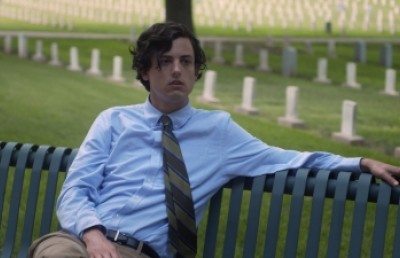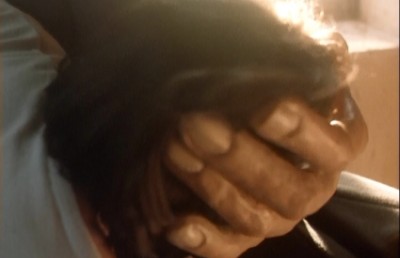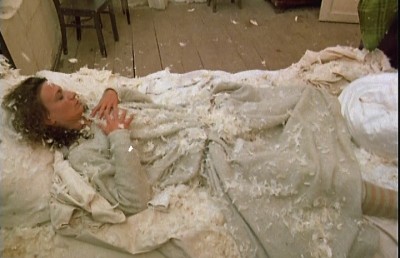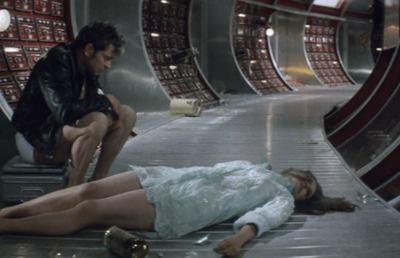A “window” on the early silent film work of Allan Dwan
The 27th edition of Il Cinema Ritrovato
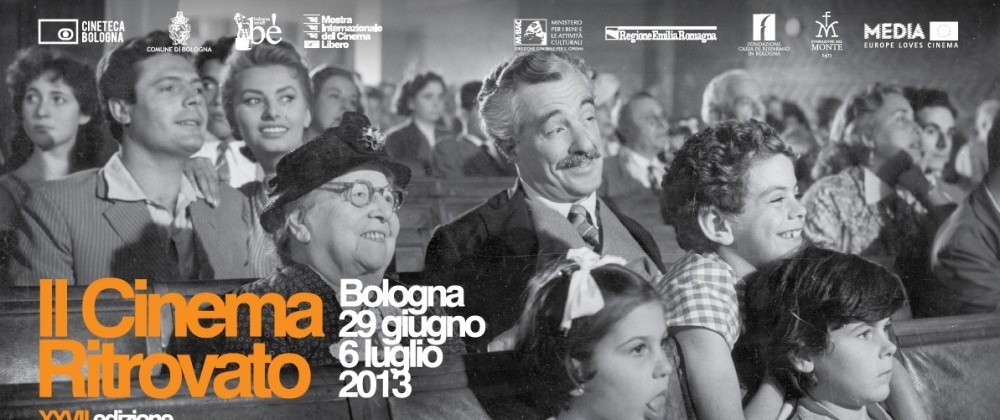
The 27th edition of Il Cinema Ritrovato, the acclaimed festival of film restoration held in Bologna, Italy (29 June–6 July, 2013) allowed audiences the opportunity to re-evaluate the work of Canadian-born, American film pioneer, Allan Dwan (1885–1981). Most notably, Kevin Brownlow in 1964, and later Peter Bogdanovich interviewed Dwan, but not since The Museum of Modern Art mounted a major retrospective in New York City in 1971, when Bogdanovich’s book, Allan Dwan was published, has much attention been paid this important film director (apart from the long videotaped interviews Brownlow conducted for the wonderful TV series, Hollywood). Dwan is best known for his silent films, especially those starring Douglas Fairbanks—ten, including four each at Fine Arts-Triangle (1916) and Artcraft-Famous Players-Lasky (1917–18), Robin Hood (1922) and The Iron Mask (1929)—and Gloria Swanson—eight pictures from their first together, Zaza (1923), their third, Manhandled (1924) and including one sound film in 1930. Indeed, among the screening highlights at Bologna were the two above-mentioned Swansons, and the Fairbanks-produced, A Modern Musketeer (1917). But these are reasonably well-known films, whereas the 24 minute fragment (@ 18fps) of Fairbanks’ He Comes Up Smiling (1918) and the six single reel shorts made for the American Film Manufacturing Company in 1911–12 that were shown revealed strong stylistic attributes, some of which were surprising. A more extensive retrospective was mounted at MoMA, New York City (June 5–July 8) in conjunction with the launching of a new book, Allan Dwan and the Rise and Decline of the Hollywood Studios, written by Frederic Lombardi, but only two of the same shorts were shown (albeit key ones), and instead of He Comes Up Smiling, Fairbanks’ The Half Breed (1916) was screened.

Allan Dwan in suit and tie next to reflectors
Much has been made of Dwan’s engineering background and he has been acclaimed for pioneering the dramatic use of the tracking camera on exterior shots in David Harum (1915), and in helping D.W. Griffith find the solution to the problem of achieving “parabolic movement’ (simultaneously vertical and horizontal) on the Babylonian set of Intolerance (1916), by building an elevator, mounted on a railway track. At the time, Griffith was Dwan’s producer at Fine Arts-Triangle, and was his stylistic mentor. No doubt Dwan’s fine mechanical sense helped in his transition to being a director at American, but he may also have been an important figure in the development of what we now know to be the “classical” Hollywood style. In researching my PhD thesis on visual style in the early films of John Ford, I conducted a great deal of statistical analysis, including that of average shot length (ASL). Whereas Griffith was clearly the person most responsible for accelerating editing rates between 1908 and 1914, especially with chase-to-the-rescue films, the Fairbanks films paved the way from 1916 to 1919, and it is interesting to speculate on the role that Dwan played here. In combining my own statistics with those of Barry Salt, one can deduce that the ASL for American films in 1915 was more than 11 seconds @16fps, but by 1917–18 it had dropped to below 7 seconds. Of the four Fairbanks films we had measured, I calculated the ASL of Dwan’s The Good Bad Man (1916) to be 6.2 seconds, with Wild and Woolly (1917), directed by John Emerson, having an astounding 3.9 seconds ASL. Salt notes that Dwan’s A Modern Musketeer has an ASL of 4 secs, while When the Clouds Roll By (1919), directed by Victor Fleming clocks in at 5 seconds.
There was clearly a team working with the actor: Fleming was credited with the cinematography of the two Dwan-directed films listed here and some of the others, while Emerson was credited as a writer as well as a director on many of them. Nevertheless, what is especially interesting about the editing of most of this series of films is that, with Fairbanks being so energetic, the only way the camera can keep up with him is by cutting on his movements. Good examples of this strategy can be found in He Comes Up Smiling. Fairbanks plays a trapeze artist, who, when his pet bird flies out of its cage, chases it up a wall, into a window, onto a roof, and then a wire, eventually swinging back and forth on a ladder connecting two buildings. Most of the action here and in A Modern Musketeer is conducted in long shot clearly showing that Fairbanks is performing the stunts himself, but Fairbanks is often framed more closely in action situations, when cutting in and out within spaces and between contiguous spaces is extremely dynamic, and where changes in camera angle (a Dwan trademark) add to the effect. A good example of variation in shot angulation is the subway scene in Manhandled, where Swanson is literally “manhandled,” stuck in a subway car surrounded by men. The camera is mounted low to the ground to show how her feet are lifted up from the floor, and, when she finally manages to extricate herself, a completely overhead camera shows her struggling to exit the train car.

Gloria Swanson in Manhandled
Most strikingly, for me, though, were the early shorts, which make a case for Dwan being a really important figure in the development of the American western. In the earliest example, The Ranch Girl (1911), a repeated shot composition frames a building perpendicularly showing the front wall and a large doorway—is it a house or a barn?— where the interior is completely dark, but where another large doorway in the rear wall is used to frame important action of men riding their horses into and out from the background. The film is otherwise narratively and stylistically undeveloped other than the use of a high angle deep focus shot, looking down the side of a mountain. The Blackened Hills and Man’s Calling (both 1912) feature the use of doorways and windows, but most notably some fine reverse angle cutting. In the former film, a young woman is seen arriving at a ranch in long shot, with men on horses behind her, while two young men stand foreground right next to a fence –reverse angle cut– the two guys are framed on the left as she walks towards a stable behind them. In the latter, the fence motif is continued and a number of reverse angle cuts develop a relationship between the prodigal son, who is supposed to be joining a mission, which is seen only in the background, and his wife to be, whose mother bakes for the mission. Although Dwan would surely have argued that most of his stylistic choices would have been learned from Griffith, it seems to me that his compositional sense may well have been more sophisticated than his mentor’s. In the book, in response to Bogdanovich’s question, “What about camera placement?” Dwan responded, “I think you have a sense of composition or you haven’t. For me, it’s mathematics. There’s nothing more beautiful than mathematical perfection – as in architecture. And you have to look at something and know where you ought to see it from. If you don’t, you have someone with you who does and ask their advice. Some people relied on their cameraman to fix the composition” (p. 25).
The most compositionally sophisticated of the shorts is The Thief’s Wife (1912). Following the opening shot of the “thief,” there is a long shot view through the doorway of his house, where his wife is framed looking to the background, graced by the figure of a lone tree. Shortly afterwards, the thief is shown looking out of a window, at the same tree, and later when his wife finds the loot he has left at home, she is also shown looking out of this window at her husband as he disappears into the background. We are then shown a diagonal, side view of the house, when the leader of a posse chasing the thief arrives to talk to the “wife.” Later when the husband returns home, there is another shot through the doorway, this time with him framed in the foreground firing at the posse in the background next to the tree. The thief then closes the door towards the camera, blacking out the frame, like a fade-out. This is followed immediately by the title “A Narrow Escape,” that prefigures the next shot, a low angle, long shot peering over the shoulders of the posse as they look towards the house, in the background. They run up the hill and as they approach the house, the thief is shown exiting an upper floor window at the left side. He escapes, and in the process shoots the leader of the posse. The wife then tends to this man’s wounds, and she is allowed to keep the loot, after her husband is shot and killed. There are other remarkable compositions in the film, including a number framed in high angle, one shot where the posse rides at the camera with the horses kicking up a cloud of dust, and the final two-shot of wife and new hero, seated outside her house, where the line of other riders pass in the background, with one of the horses carrying the “thief’s” dead body across its back.
What is most significant about these visual details—mainly the use of doorways, windows and fences—in terms of the development of the western genre, is that the shot compositions are not only formally elegant—especially in the articulation of different layers of depth—but also suggest various relationships and contradictions between interior and exterior space. The wilderness is being conquered by human settlement, but this settlement can also be used as a refuge for criminals in the Thief’s Wife. In passing through the opening to a fence framed by young cowboys in The Blackened Hills, a young woman demonstrates her courage in confronting the bully of the ranch. A young man in Man’s Calling defies his father’s orders to become a friar—the film’s alternate title is “Almost a Friar”—and consequently, he doesn’t enter the gateway of the Friary, which, for him acts as a kind of barrier. Throughout we, and he are reminded of his “calling” by lines of friars who pass through the film frame, both laterally and in depth. In the past, I had been struck by the example of a doorway used in a Fairbanks/Dwan western, The Good Bad Man (1916) as a very John Ford-like threshold between interior (civilization) and exterior (wilderness). Although the actor, Harry Carey (influenced by appearing in westerns directed by Ford’s brother Francis) delivered many “good/bad man” performances, framed by a doorway, it is possible that John Ford had actually been influenced by Dwan’s compositional strategies before making Straight Shooting (1917), the director’s oldest surviving film.



